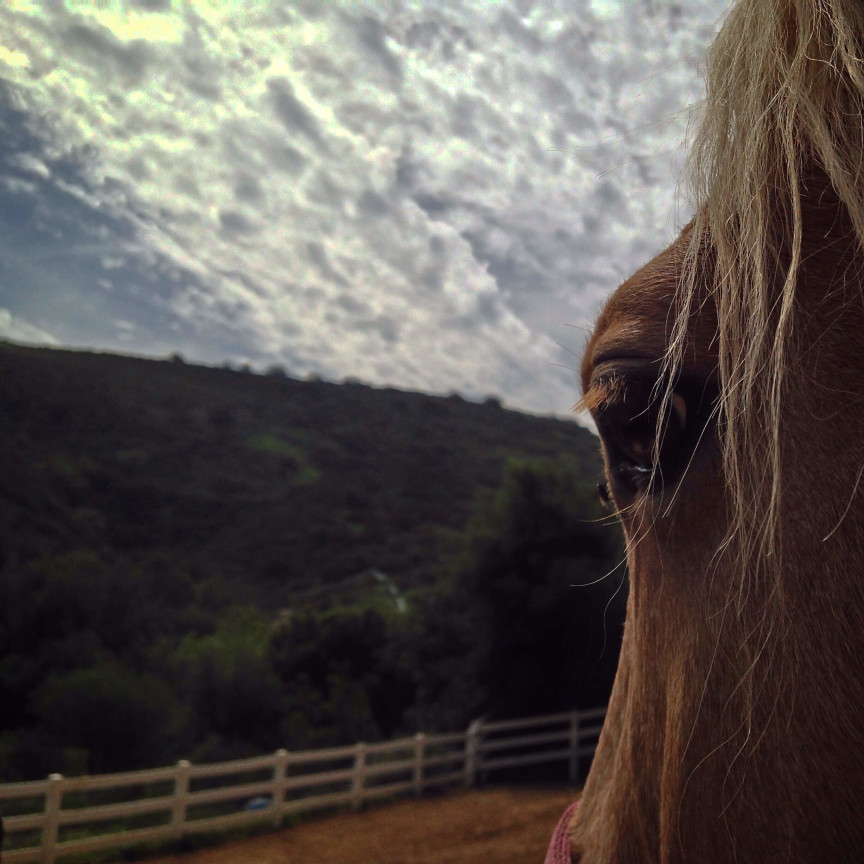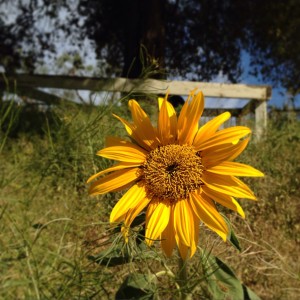 Trail riding can give you some of the most wonderful experiences you’ll ever have on a horse. On a great ride, you can experience some of the greatest things about working with and riding horses: interaction with nature, the power of the horse, a great controlled and totally connected trot or canter, good conversation or just some time alone with one of your best friends.
Trail riding can give you some of the most wonderful experiences you’ll ever have on a horse. On a great ride, you can experience some of the greatest things about working with and riding horses: interaction with nature, the power of the horse, a great controlled and totally connected trot or canter, good conversation or just some time alone with one of your best friends.
However, on any given day, it can also be one of the most terrifying things you’ve ever done. Something scares your horse and he spins around sending you sprawling to the dirt, a helicopter comes a little too close, your horse panics and starts charging off as fast as possible, you walk by a rock and your horse gets terrified it’s going to kill him, cars, umbrellas, it’s Tuesday, trees, tack problems, wind, balloons . . . the list goes on of things that can turn a beautiful day for a ride into one of your worst nightmares.
We should always expect danger and always take as many safety precautions as possible.
Since danger is inevitable there are a few things we can get in the habit of doing to make sure we are as ready for it as possible.
- Check and recheck your
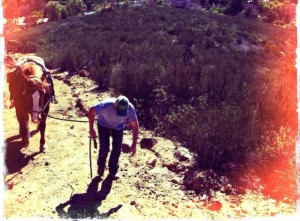 tack for wear or breakage. Look for broken, frayed or cracked areas. Replace them if you are in doubt of their strength. A good rule of thumb is: if you question it, replace it. Check your reins, your headstall, your girth, offside billet and cinch. Check your stirrups, leathers and fenders. DON’T FORGET THE OFFSIDE! Most overlooked part of the saddle is the offside connection of the girth.
tack for wear or breakage. Look for broken, frayed or cracked areas. Replace them if you are in doubt of their strength. A good rule of thumb is: if you question it, replace it. Check your reins, your headstall, your girth, offside billet and cinch. Check your stirrups, leathers and fenders. DON’T FORGET THE OFFSIDE! Most overlooked part of the saddle is the offside connection of the girth. - Check your girth tightness. I don’t want to get in to how tight right now but the important thing is that you check when you put on the saddle, then you check a few minutes later and you check as you’re putting your foot in the saddle and you check a while into your ride…the point is CHECK YOUR GIRTH OFTEN. You honestly can’t check this enough.
- Always bring a hoof pick. Don’t be that guy trying to dig out a rock with another rock or a stick. Just bring one along. Better yet, attach one to your saddle or bring a saddle bag with one in it.
- Always bring a halter.
 I usually keep one on under my bridle. You don’t have to have it on your horse but bring one along anyway. I’ve caught more than a few running scared riderless horses to appreciate this one. If for some reason you have to walk or pony your horse, it’s better to do it with a halter, and if you find a place to tie up and have a snack this’ll come in handy.
I usually keep one on under my bridle. You don’t have to have it on your horse but bring one along anyway. I’ve caught more than a few running scared riderless horses to appreciate this one. If for some reason you have to walk or pony your horse, it’s better to do it with a halter, and if you find a place to tie up and have a snack this’ll come in handy. - Ride with other people. Having a buddy will save you time and time again. Just another set of eyes will go along way to spotting danger before it’s too late. Another set of hands if something does happen will be invaluable. The possibilities are endless for things to go wrong. Having a buddy with you can literally save your life. ALWAYS TAKE A BUDDY.
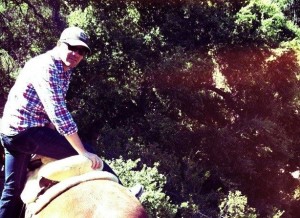
- Ride with the right people. As valuable as having a buddy may be, having the wrong buddy may be equally dangerous. If your buddy is the type to go galloping off as you’re mounting your horse – wrong person to ride with. If your buddy does dangerous things that can have an effect of you – wrong person. Honestly you probably know a few people like this. Don’t ride with them. It’s just your life we’re talking about.
- Keep your eyes out for your horse’s eye and ears. Your horse can see movement better than you. Your horse can hear better than you. Your horse doesn’t take as much for granted as you. Your horse is afraid at all times that something is going to eat them. Use your horse’s natural talent to spot danger to your advantage. If your horse stops dead in his tracks, pegs his ears forward and lifts his head high: stop. Lo
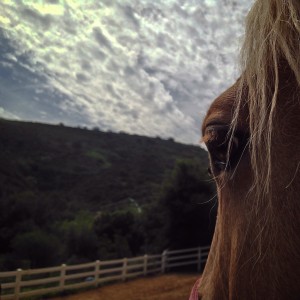 ok for what he sees and expect him to bolt if it comes after him. Your horse is seeing something before you did. Appreciate the warning and look for the danger. It might just be an umbrella, or a bicycle or a rabbit, but it might just be something worth seeing from a distance and avoiding.
ok for what he sees and expect him to bolt if it comes after him. Your horse is seeing something before you did. Appreciate the warning and look for the danger. It might just be an umbrella, or a bicycle or a rabbit, but it might just be something worth seeing from a distance and avoiding. - Trust your horse to know what he’s not comfortable doing. If your horse doesn’t want to do something it might be best to find another way, avoid the obstacle all together or move the obstacle out of the way. The more you force your horse to lead through some danger the more likely he is to bolt on the other side, freak in the middle or spin away.
- Don’t be afraid to get down and lead your horse through something. Sometimes they just need someone to stand in front of them and protect them from the danger. Since you can’t explain that that boulder won’t leap on them, sometimes it’s best to just dismount and walk them past the boulder so they can follow you and see you handle the danger. Sometimes they need to follow and that’s ok.
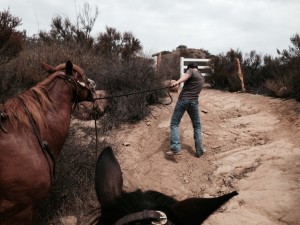
- Walk a lot, trot some, canter a little and gallop rarely. Moderation is always good. Don’t destroy your horse with a ride of all cantering. Not only will this help the horse develop bad habits, you just might hurt him. Horses aren’t meant for long runs. Walking and standing around grazing is what they’d do most if left to their own devices. Millions of years have turned your horse into a walking and grazing pro with the ability to quickly outrun danger every once in a while. Remember this.
- Be careful heading home. The moment you turn your horse back toward the direction of home he will most likely get excited. Expect this and be prepared for a jumpy, excited horse. Calm him, encourage walking and talk easy. A lot of accidents happen when a horse gets excited and someone lets that excitement go to their heads on the way home.
- Do it all again. The more often you get out on those trails the more comfortable with the trails your horse will be. Get in the habit of riding often.
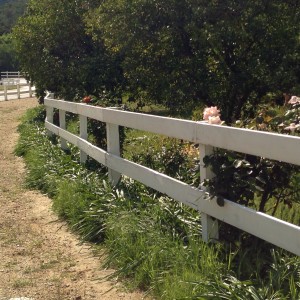 Change it up. Go new places. If you have a horse that’s used to going new places it won’t faze him as much when you go to a new place. This will make each new ride that much more fun and enjoyable.
Change it up. Go new places. If you have a horse that’s used to going new places it won’t faze him as much when you go to a new place. This will make each new ride that much more fun and enjoyable.
Stay safe. If you are ever scared don’t do it, check your tack, get a buddy, keep your eyes out, walk a lot, walk home, go new places, bring a hoof pick and a halter and do it often.

